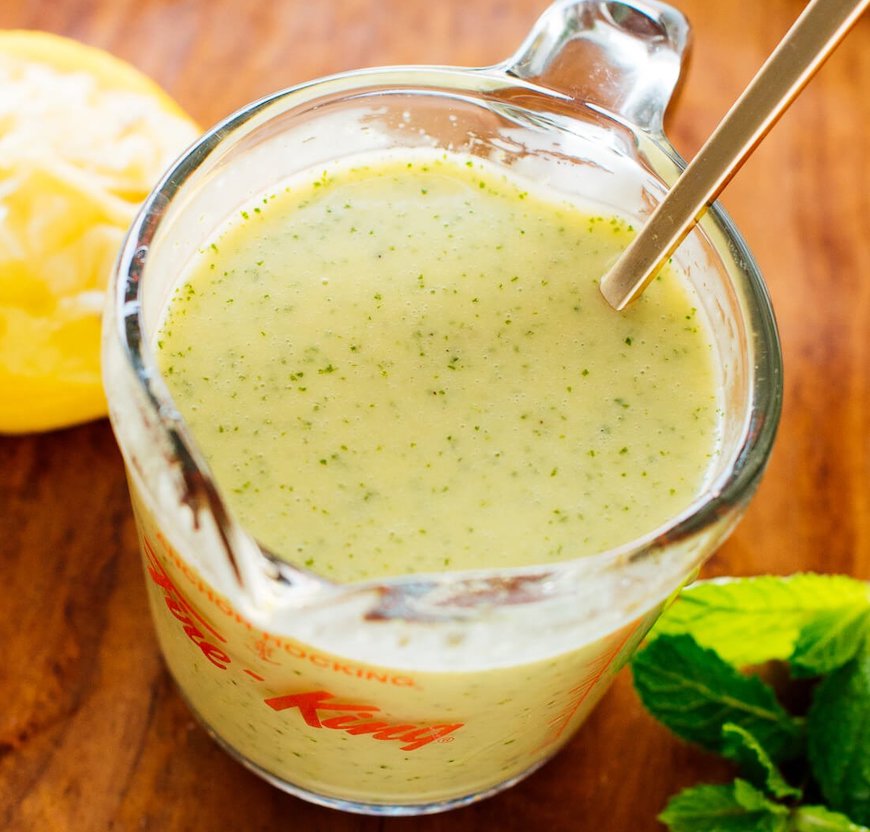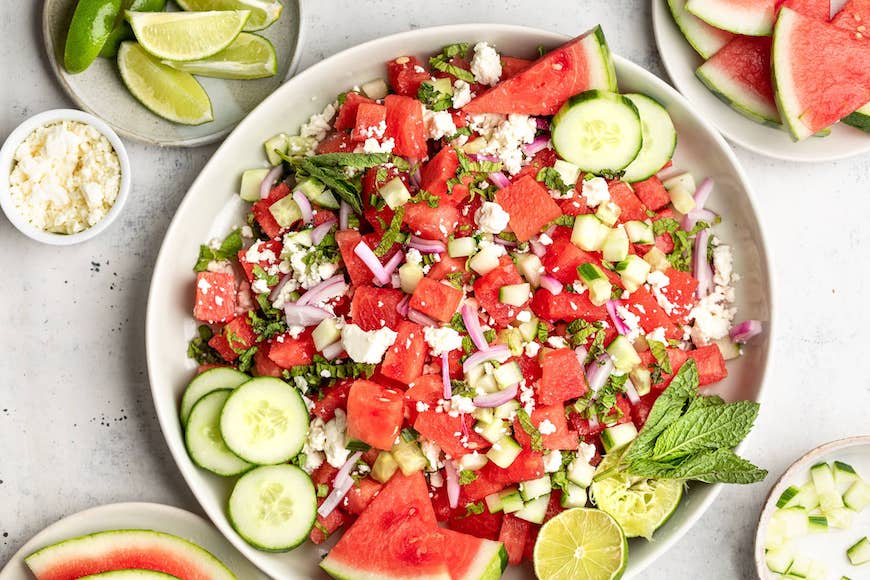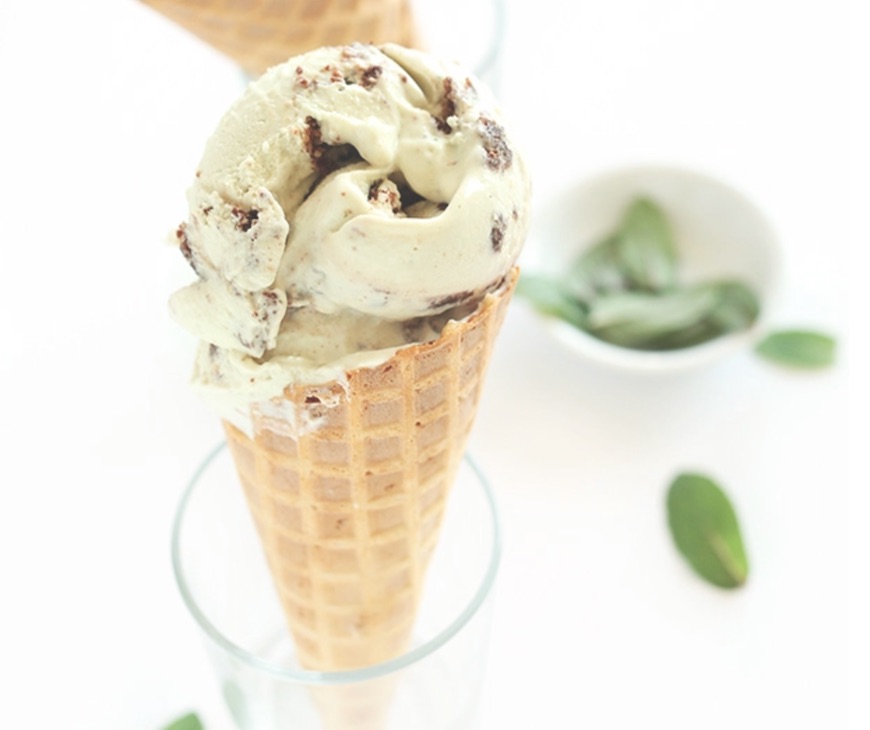While some herbs that are rich in benefits aren’t exactly pleasant on the palette, mint is downright refreshing. It’s so well-liked that it’s the flavor profile of choice for chewing gums and after-dinner candies crafted to linger.
Here’s what you might not know about mint: there are different types of it—a full 13 to 24 separate species. This includes peppermint, spearmint, chocolate mint, wild mint, and pennyroyal, to name a few. These varieties offer slightly different flavor profiles, so it can be fun to experiment with different types to pinpoint the ones that are your faves.
Something else you might not know about mint is that it’s one of the easiest herbs to grow. Because of this, it’s grown all over the world, including North America, Europe, Asia, southern Africa, and Australia. If you want to grow it yourself, plant it in a container—such as a pot—in a place where it will get morning sun but afternoon shade. Mint is one of those plants that can take over, so it’s best to grow it separately from other plants. In terms of storing mint, whether you are growing it yourself or buying it at the store, it’s best to place the leaves in an airtight plastic bag in the refrigerator. That way, the leaves will stay fresh as long as possible. To really prolong their lifespan, wrap your mint leaves (stem attached) in a damp paper towel before placing them in the baggie.
Mint has been widely studied by researchers, and plenty of science points to the many ways it can be used to benefit the body. (Peppermint specifically has been widely studied and is the mint variety focused on here, unless noted otherwise.) Here, Ginger Hultin, RD, author of Anti-Inflammatory Diet Meal Prep ($12) and How to Eat to Beat Disease Cookbook ($18), explains five mint benefits. Following, you’ll find recipe inspo for creative and delicious ways to use it.
5 mint benefits, according to a registered dietitian
1. It helps with digestion.
The ritual of popping a mint in your mouth after a meal isn’t just for fresh breath. Scientific studies show that mint helps with the digestive process. “Research shows that mint is readily absorbed by both stomach and intestinal tissues where it has a soothing effect,” Hultin says. “It has been shown to exhibit spasm-calming effects and slow peristalsis—aka the natural movement of the intestines that aids in digestion. So it’s very soothing on the digestive tract.”
Clearly, cooking with mint can help with digestion as well as enjoying it after a meal. But this research also means that mint can help soothe the stomach even when it isn’t mealtime. Think of it as the all-natural alternative to Tums.
2. It can be beneficial for people with IBS.
Since mint can help soothe the stomach by calming spasms in the intestines, it can be an especially helpful herb for people with irritable bowel syndrome. Studies have shown that peppermint—specifically in oil form—can be a safe and effective way for people with IBS to treat their abdominal pain and reduce symptoms.
3. Mint could boost your mood.
Besides helping soothe the stomach, consuming mint could also result in a mood boost. In fact, even just the smell of it has been shown to help people feel less anxious or depressed. “The study cites specifically GABA receptor binding properties and that’s something that happens in the brain that produces a calming effect and can even reduce feelings of stress and anxiety,” Hultin explains. GABA receptors play an important role in the body’s response to stress, helping to control fear and anxiety. So the fact that mint supports these crucial mood receptors is powerful.
4. It could help with brain function.
Mint (specifically spearmint) has also been shown to help improve cognitive function and memory. Researchers credit this to the herb’s high polyphenol content. Polyphenols are active compounds that benefit the body by fighting against harmful agents like ultraviolet rays, radiation, and some pathogens. In addition to supporting cognitive function, polyphenols also play a role in protecting against certain diseases and cancers. So the fact that mint is such a good source of them is a major positive.
5. Mint could help with athletic performance.
One study showed that consuming peppermint before exercising significantly improved athletic performance. “[This] might be due to the peppermint effects on the bronchial smooth muscle tonicity with or without affecting the lung surfactant,” the study reads. In other words, mint makes it easier to breathe—and proper breathing is crucial for exercise exertion. So if you want to really crush your next workout, it could be worth sucking on a peppermint before you lace up your sneakers.
5 ways to consume mint
With a resume like the one above, mint proves it’s worth enjoying on a regular basis. Rounded up here are five recipes to get you started.
1. Peppermint tea
If you want to use mint to soothe your stomach or help with digestion, enjoying it in the form of a tea is one of the best ways to reap the benefits. The video above shows an easy way to brew some, also incorporating antioxidant-rich cacao.
2. Chocolate peppermint cookies
You certainly can’t make Thin Mints without peppermint and this recipe shows how to make a batch that’s both gluten-free and low-sugar. Made with rolled oats, cashew butter, and almonds, these cookies are full of fiber too.

3. Fresh mint dressing
Incorporating mint into an easy salad dressing will brighten up your whole bowl of greens. Here, it’s used in a Dijon mustard dressing, along with olive oil, lemon juice, honey, garlic, sea salt, and pepper. In just five minutes, you’ll have a homemade dressing you can use all week long.
Get the recipe: fresh mint dressing

4. Watermelon mint salad
Mint can also be worked into the salad itself, as this summer recipe shows. The herb is paired with watermelon—another seasonal fave—plus cucumbers and feta cheese.
Get the recipe: watermelon mint salad

5. Vegan mint chocolate ice cream
What would a mint recipe roundup be without ice cream? This recipe has a super simple ingredients list and is entirely vegan. The secret is using full-fat coconut milk, which makes the ice cream extra creamy.
Get the recipe: vegan mint chocolate ice cream
As you can see, there are so many ways to use mint beyond just sucking on it in the form of hard candy. With its many benefits, it’s definitely worth experimenting with. The best past is that the perks of mint are as good as the taste. Talk about a win-win!
Oh hi! You look like someone who loves free workouts, discounts for cutting-edge wellness brands, and exclusive Well+Good content. Sign up for Well+, our online community of wellness insiders, and unlock your rewards instantly.
Our editors independently select these products. Making a purchase through our links may earn Well+Good a commission.
